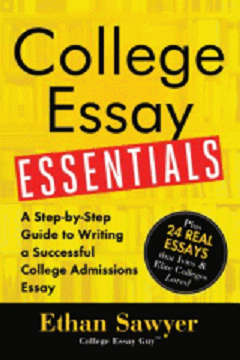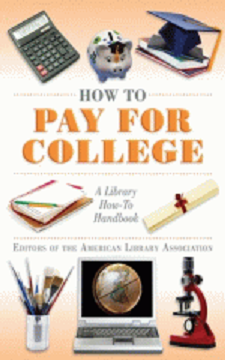
Paying for college is a big challenge. The Institute of Education Sciences (IES) gathers scientific evidence to describe how well the United States is educating its students. IES’s Fast Facts: Tuition costs of colleges and universities reports a significant increase in average tuition and fees from 2010 to 2020.
For good reason, students and families often look to scholarships as an additional source of funding. While this a great plan, the likelihood that a student could pay for college entirely with scholarship money is low. To increase the possibility of scholarship awards, students should devise a strategy to search and apply for scholarships.
Generally scholarships fit into three categories: local scholarships, institutional scholarships, and private scholarships. The best course of action when applying is to start small and expand. First look for local scholarships which are awarded by community organizations to local students from area high schools. Although the award amounts may be smaller, there are fewer students applying and piecing together a few local scholarships can add up quickly. Institutional scholarships are awarded by specific colleges and can significantly lower the cost of attendance. Contrary to popular belief, the most generous institutional scholarships are awarded for academic excellence rather than athletic prowess. Private scholarships include any scholarship that does not come from a specific institution or a local organization. There are thousands of private scholarships. When researching private scholarships be sure to check eligibility requirements before applying. If anyone and everyone is eligible to apply, the lower your likelihood of earning the scholarship. Focusing your attention on scholarships closely aligned with your abilities and interests might yield better results.
Let the scholarship hunt begin!
Inconsistent with the scholarship strategy described above, private scholarships worth “big attention” are the College Board’s BigFuture Scholarships. Right now members of the Class of 2023 should be applying for scholarships and BigFuture Scholarships: Earn by Planning for College makes it easy! Any student with a College Board account may participate in the BigFuture scholarship program. BigFuture Scholarships: Earn by Planning for College enters high school students into monthly scholarship drawings for $500 and $40,000 for completing the following tasks: building a college list, practicing for SAT, exploring scholarships, strengthening your college list, completing the FAFSA, and applying to colleges. And since these are the steps every student should be taking in their college planning, there’s no extra effort required! For details, see Class of 2023 BigFuture Scholarships Timeline.
Ethan Sawyer is known as “The College Essay Guy” and he offers tons of free resources on his website. Check out his Paying for College resources for a detailed scholarship strategy beginning as early as middle school. You might also be interested in his book, College Essay Essentials: A Step by Step Guide to Writing a Successful College Admission Essay, which is an excellent resource when it comes to writing scholarship and admissions essays.
Going Merry is a scholarship matching platform created by college graduates who relied on scholarships to pay for college. Students can create a profile which is used to match them to scholarships. Students can then apply directly to those scholarships using Going Merry’s platform.
Finally, Federal Student Aid is the US Department of Education’s website for accessing financial aid to pay for college. It offers great advice for Finding and Applying for Scholarships | Federal Student Aid. Also, take some time to view FSA’s webinar Applying for Federal Financial Aid and Scholarships Made Easy. In this webinar Stephanie Panion from the Boettcher Foundation provides worthwhile guidance for completing scholarship applications.
Resources
- About IES: Connecting Research, Policy and Practice
- BigFuture Scholarships Class of 2023 Timeline and Number of Winners
- BigFuture Scholarships: Earn by Planning for College
- College Essay Guy
- College Essay Guy – Paying for College
- Federal Student Aid
- Finding and Applying for Scholarships | Federal Student Aid
- FSA Applying for Aid and Scholarships Made Easy
- Going Merry
- Mind-blowing Scholarship Stats for 2021 – WhatToBecome
- Practice for the SAT Scholarship – BigFuture | College Board
- Search for Scholarships – BigFuture
- Strengthen Your College List Scholarship – BigFuture
For further reading
You will find many more scholarship resources by searching Charles County Public Library’s catalog. Here are a few items to get you started on your scholarship quest.
College essay essentials: a step-by-step guide to writing a successful college admission essay by Ethan Sawyer,
So you’re a high school senior given the task of writing a 650-word personal statement for your college application. Do you tell the story of your life, or a story from your life? Do you choose a single moment? If so, which one? The options seem endless. Lucky for you, they’re not. College counselor Ethan Sawyer (aka The College Essay Guy) will show you that there are only four (really, four!) types of college admission essays.
How to Pay for College by the Editors of the American Library Association
1001 Ways to Pay for College by Gen and Kelly Tanabe
Completely revised with updated descriptions, contact information, websites, and available monies, this guide to financing higher education is the only resource students need to fund their pursuit of knowledge. Balancing detailed explanations with real-life examples and practical resources, the featured topics include finding and winning scholarships, requesting a reassessment from colleges for more financial aid, maximizing assistance from state and federal governments, taking advantage of educational tax breaks, and benefiting from government-subsidized student loans. Creative strategies-such as starting profitable dorm-room enterprises, trading tuition costs for volunteer service, and canceling debts with loan-repayment programs-help students find extra money when more traditional routes are exhausted. The provided tips are designed for students of all ages and levels and their parents.
Graduating College Debt Free by Nicole Delorio
College can be expensive the average graduating college senior is nearly $30,000 in debt when he or she walks off campus. There is also more financial aid available than ever before, with more than $238 billion distributed in 2012-13. There are a lot of options out there, and if you are not sure how to find the right financial aid for you, this book is your answer. We provide you with information on over 2,200 programs that offer scholarships, internships, or loans to more than 1.7 million students each year. For example, the Chick and Sophie Major Memorial Duck Calling Contest awards $2,000 to the high school senior with the best duck call in the country. There’s also the Van Valkenburg Memorial Scholarship, where you can win $1,000 if you’re a descendant by birth or legal adoption of Lambert and Annetje Van Valkenburg. This book will also provide hundreds of innovative ways to cut college costs, including tips on how to earn college credit on an accelerated basis, how to calculate your college budget, how to make use of tuition prepayment plans, how to combine higher education and course-related employment, and how to buy supplies and textbooks for cheap. If you’re looking to graduate debt-free, this book has you covered.
501 Ways for Adult Students to Pay for College by Gen and Kelly Tanabe
How to Graduate Debt Free by Kristina Ellis
Seventy percent of college students graduate with an average of nearly $30,000 in debt– more than many college graduates make in their first year out of school. Motivated, intentional planning can make thousands of dollars of difference when it comes to paying for college. This book will equip students and parents with the know-how to confidently navigate financial planning at this important season, enabling students to graduate with a great financial foundation to accompany their hard-earned degree.
Debt Free Degree by Anthony Oneal
What every parent needs to know in order to pay cash for college. Most people believe that student loans are the only way to pay for college. That’s why we have a $1.5 trillion student loan crisis in the US and over 40 million Americans are saddled with student loan debt. But there is another way. Debt Free Degree teaches parents how their kid can graduate from college without debt, even if they haven’t saved for it. It also shows parents how to prepare their child for college, covering topics like what classes to take in high school, when to start testing, how to do college visits, and how to choose a major. Every parent wants the best for their child. Graduating from college without debt is not only possible-it positions both parents and students to win with money for life.












